Safe Boxes
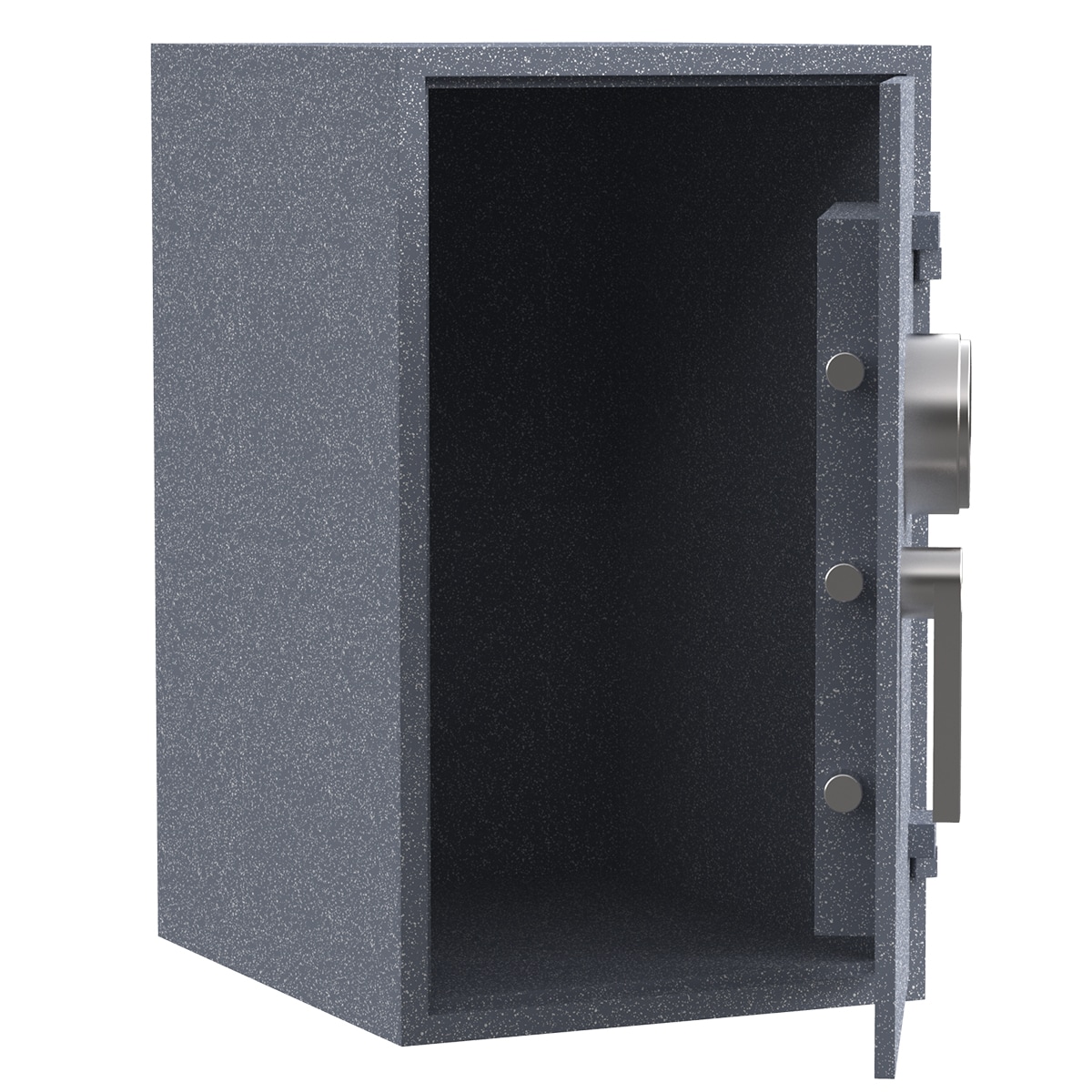
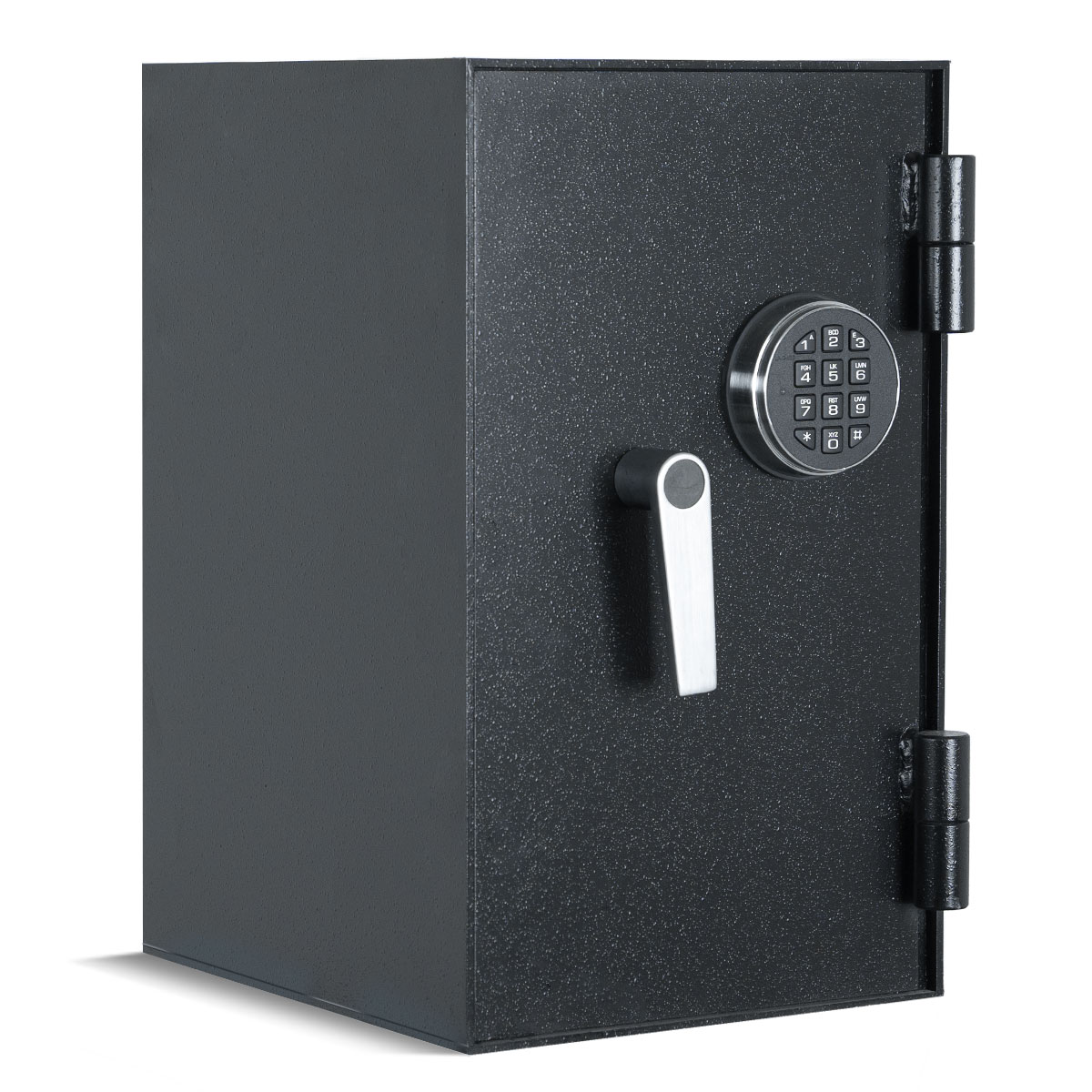
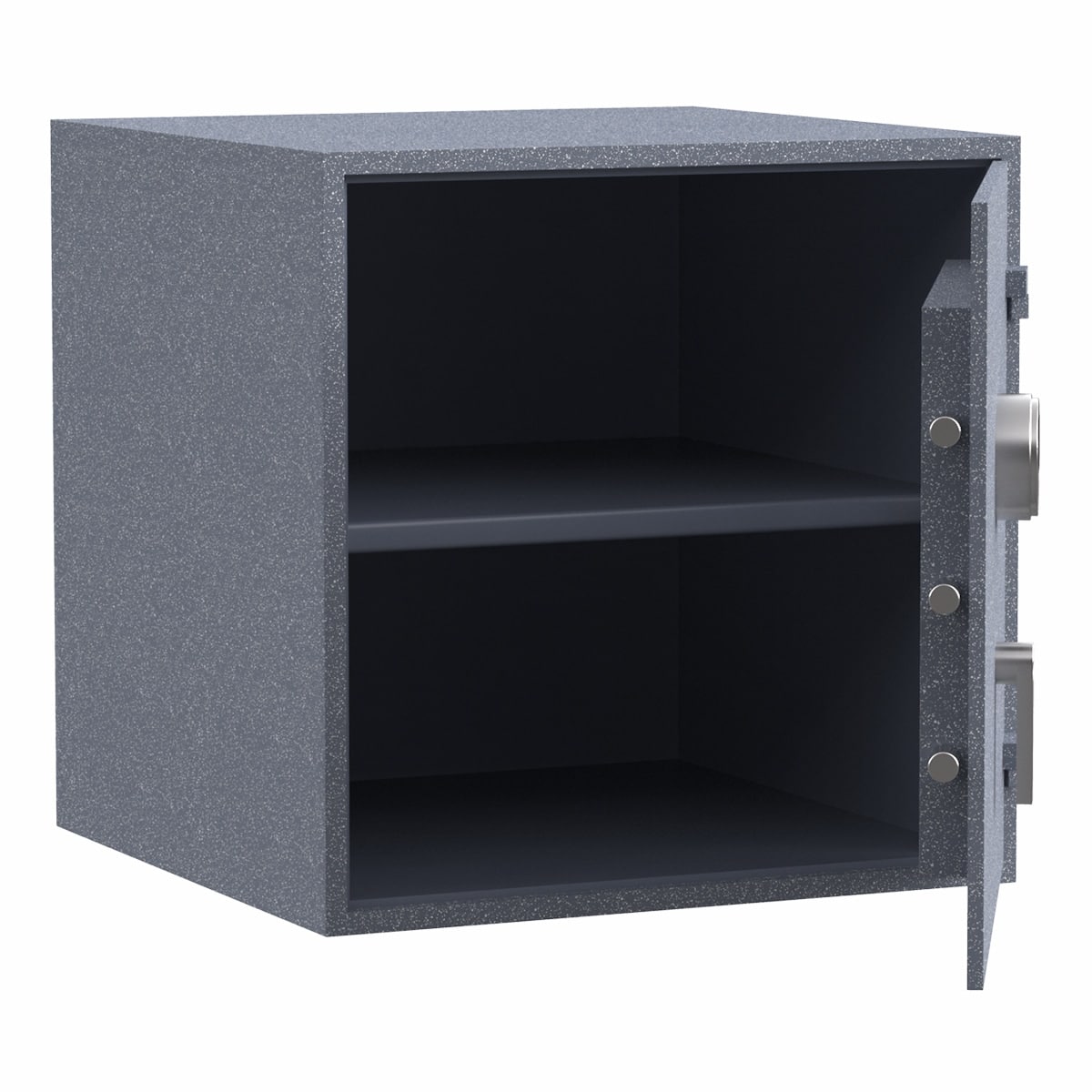
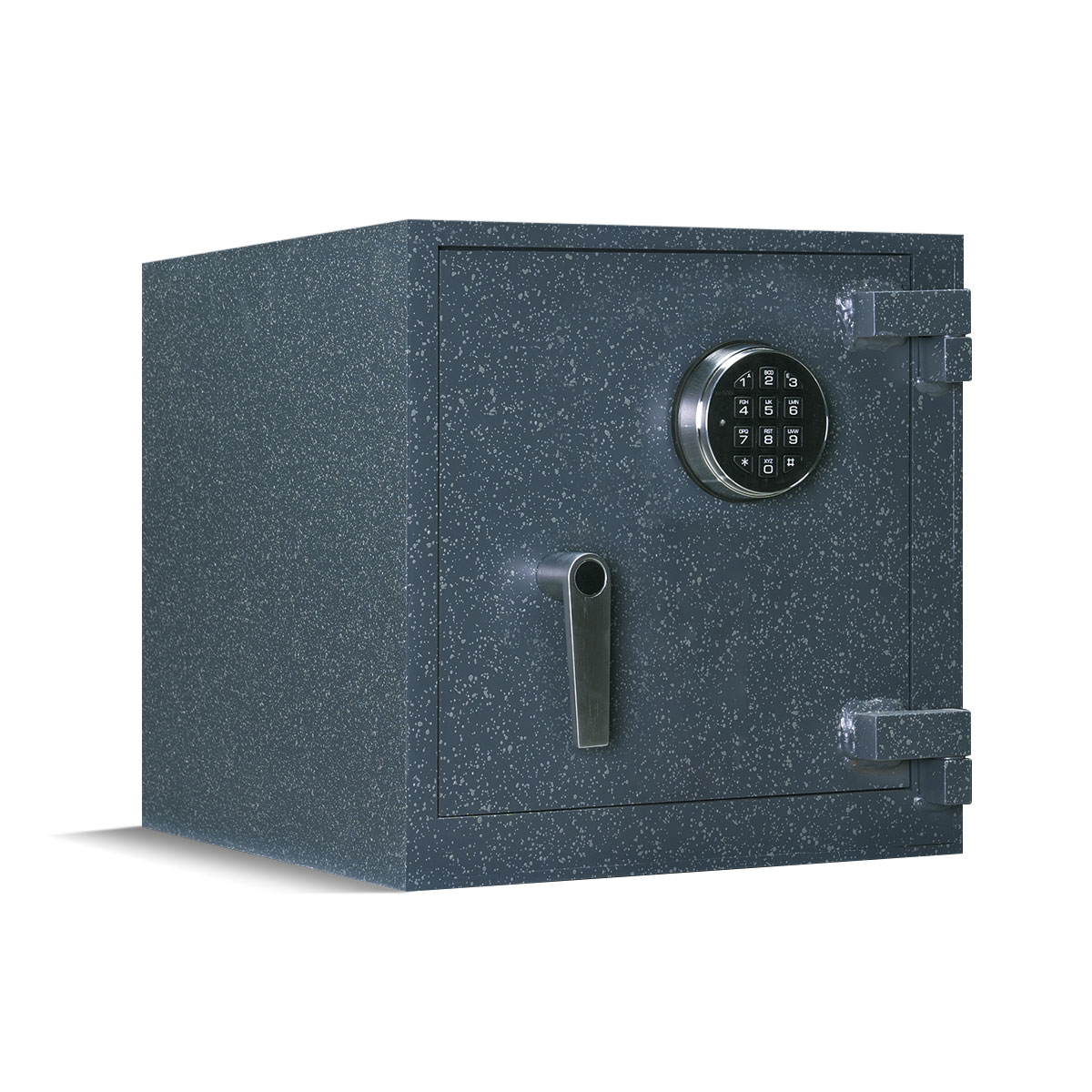
BR-Rated Residential Burglary Safe

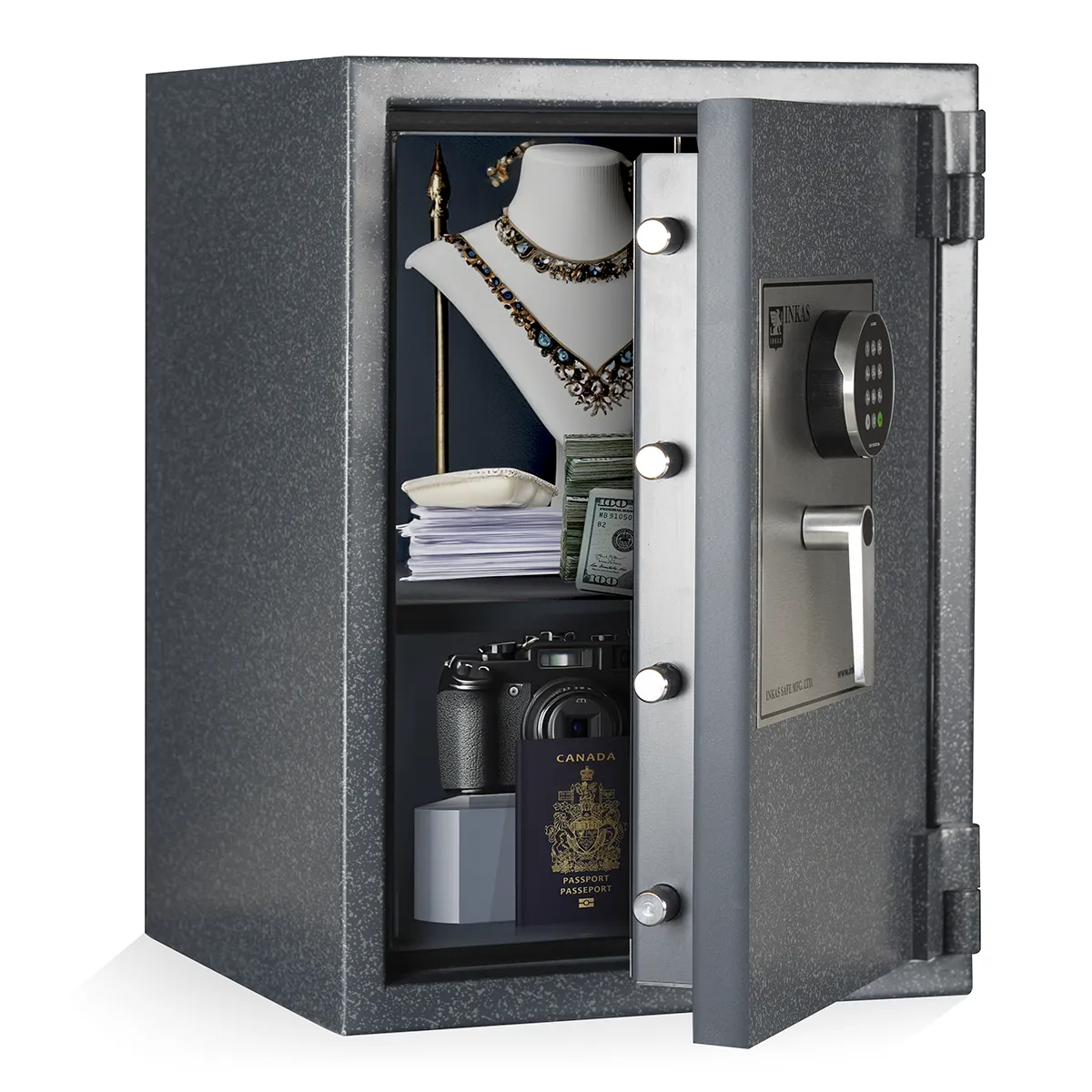
RSC-Rated Residential Burglary Safe
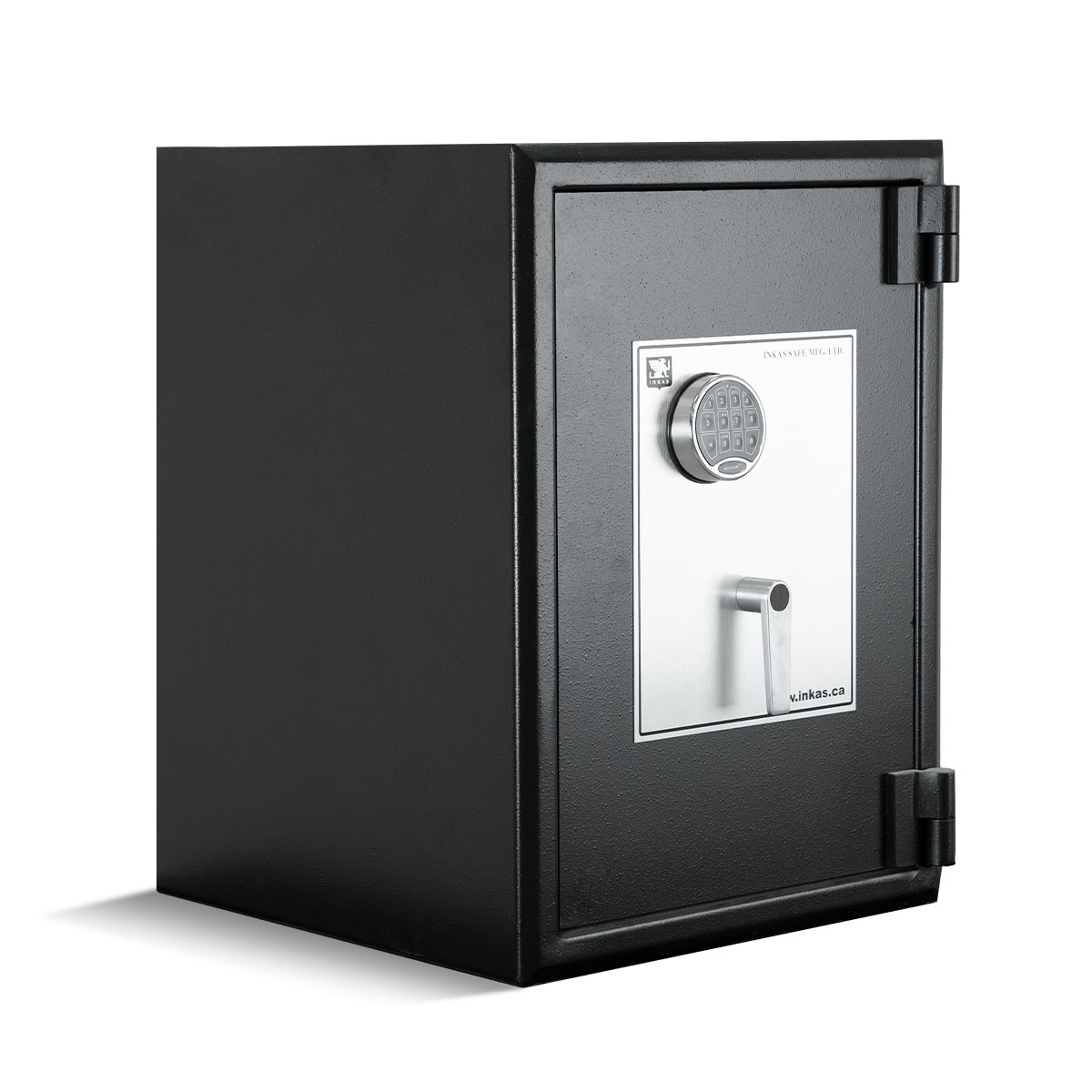
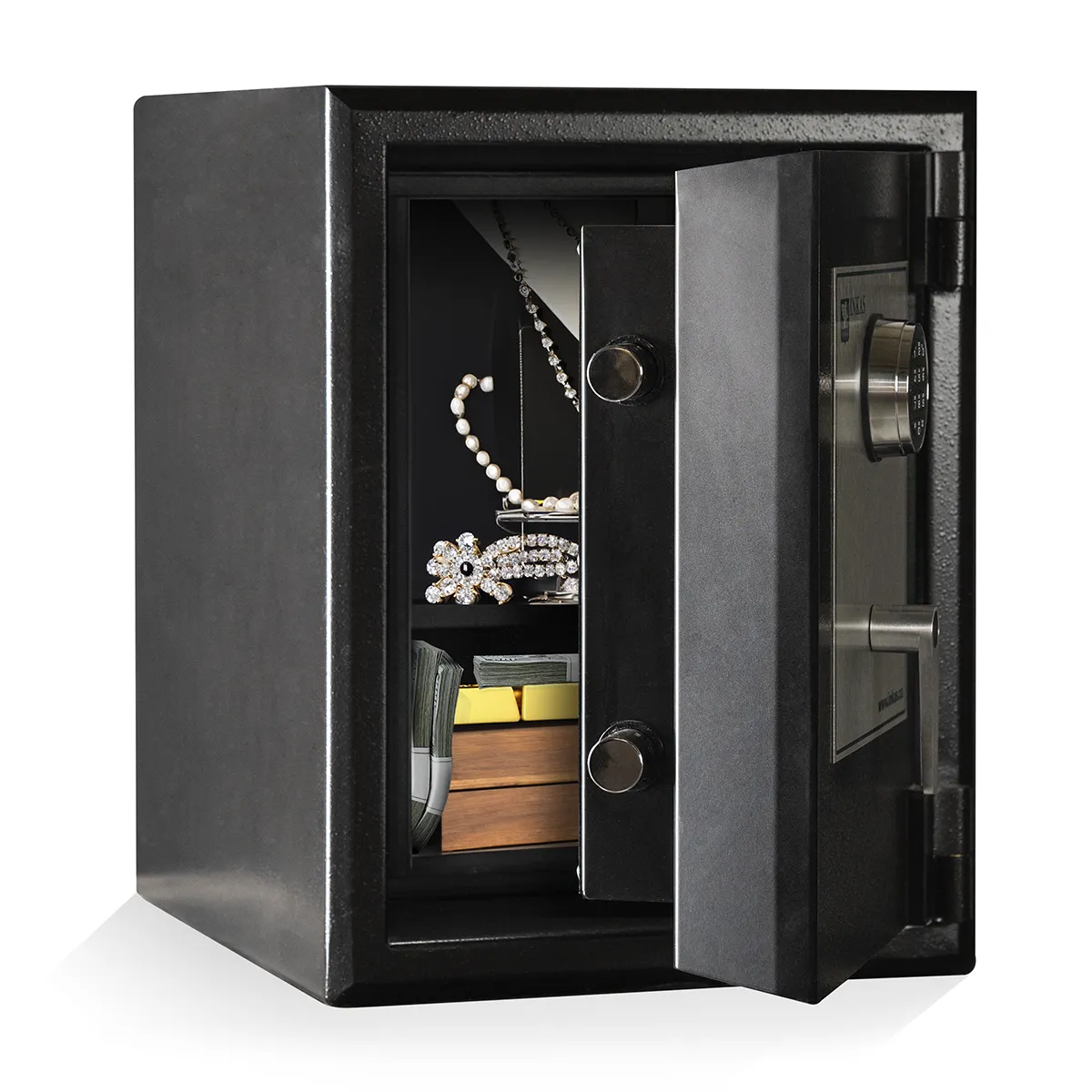
UL-TL15 High-Security Safe
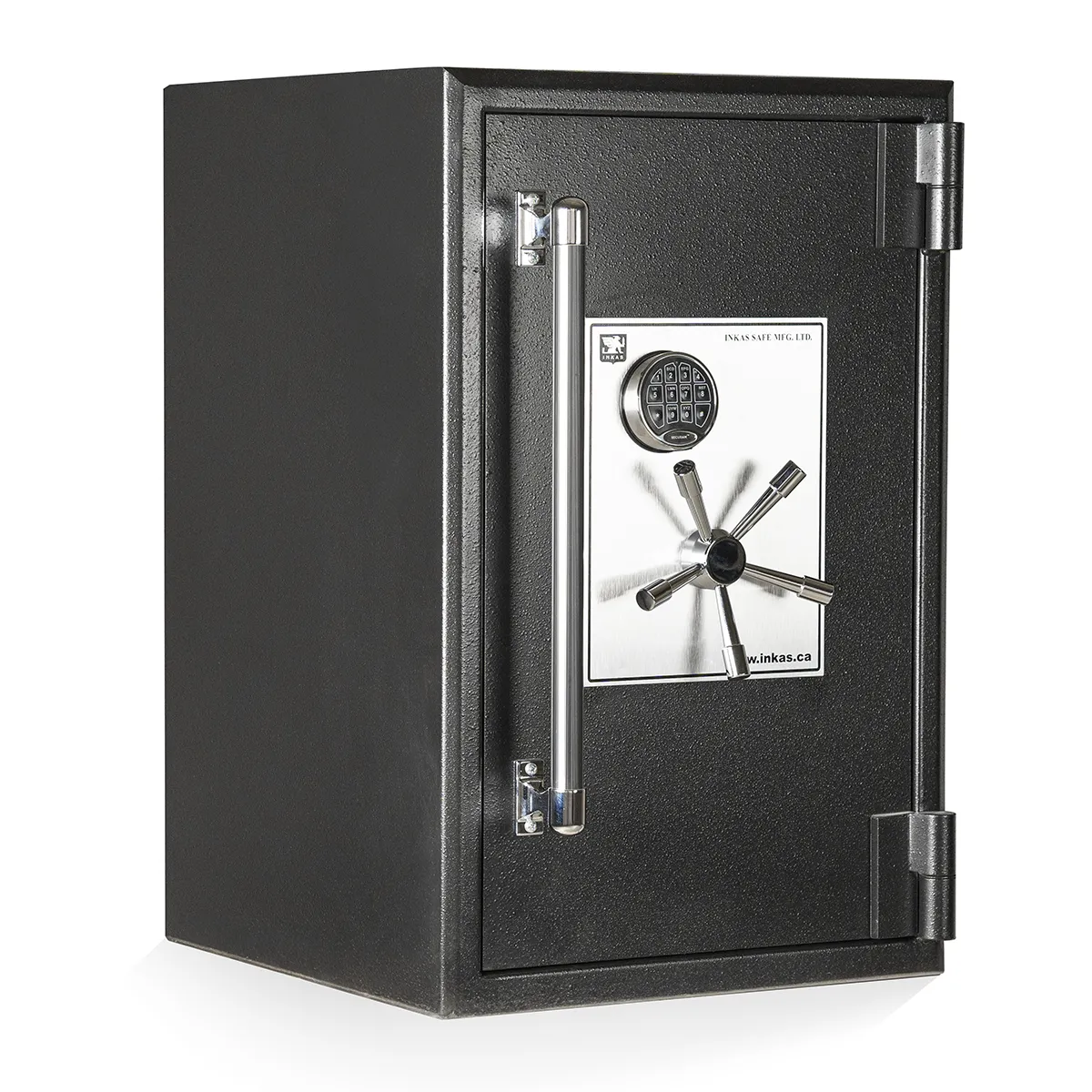
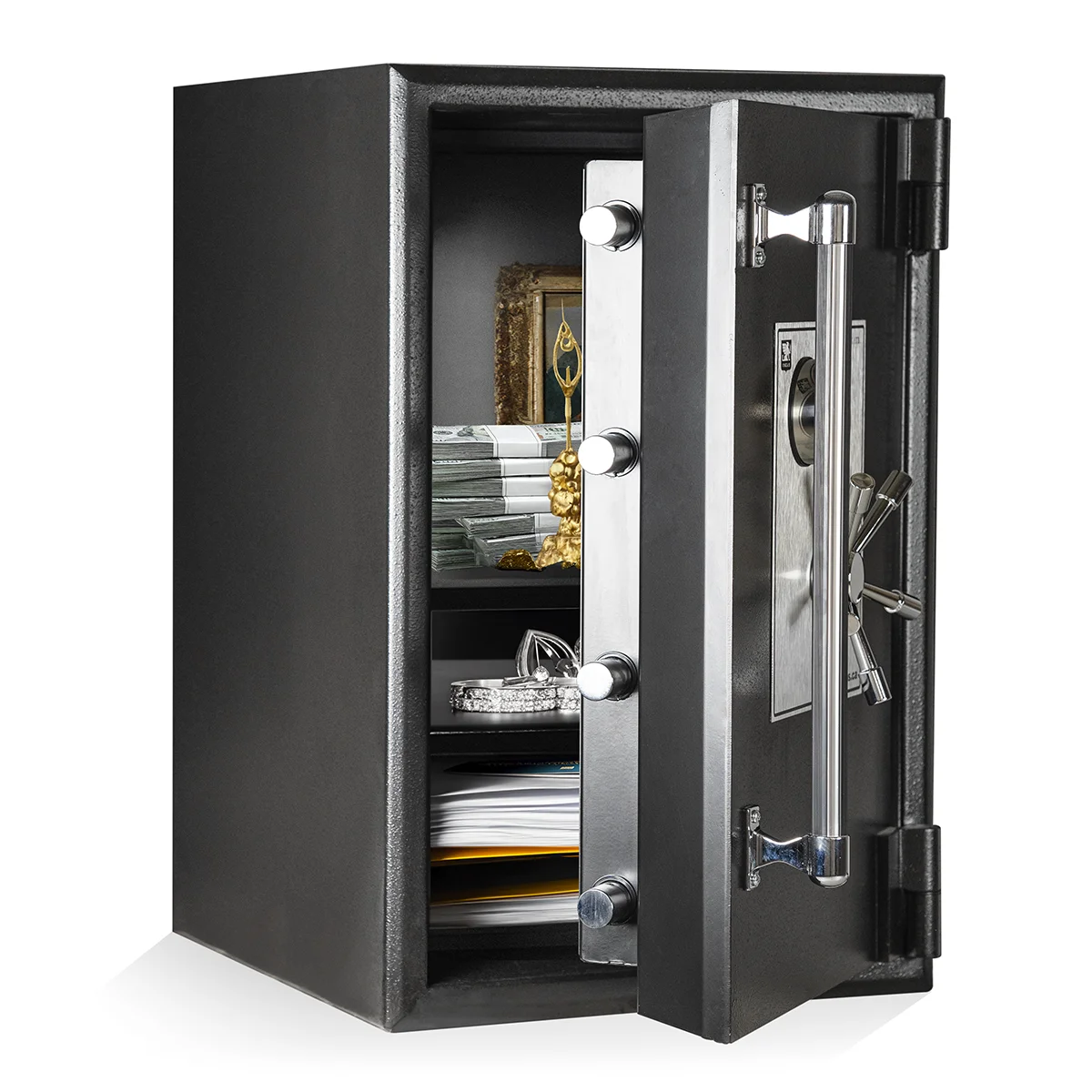
UL-TL30 High-Security Safe
Safe Boxes at INKAS Safe Manufacturing
A safe box – is a secure lockable box used for securing valuable objects against theft or damage. Safe boxes come in various types, sizes, and with different features to cater to a wide range of needs. Traditionally, safe boxes were seen as a tool for the wealthy or businesses, but they have become increasingly popular for personal use in homes. Modern safe boxes are designed with cutting-edge technology, including biometric locks, digital codes, and sophisticated alarm systems, ensuring top-notch security for your valuables.
The evolution of safe boxes has also seen them become more versatile. Today's safes are not only resistant to burglary attempts but also offer protection against environmental hazards. For instance, fireproof and waterproof safes protect your valuables from fire and water damage.
In essence, safe boxes are an indispensable tool for anyone looking to protect their valuable possessions. They provide security and peace of mind, knowing that your important items are safe from theft and damage. As you explore the world of safe boxes, you'll discover a range of options available to suit your specific needs, whether for personal or professional use.
Types of Safe Boxes
The world of safe boxes is diverse, offering various types to cater to different needs and preferences. Understanding the types available is crucial in selecting the right safe for your security requirements. Here are some of the common types of safes:
Wall Safes
Wall safes are designed to be mounted within the walls of your home or office. Their primary advantage is concealment; they can be easily hidden behind paintings, mirrors, or inside closets, making them less noticeable to potential burglars. Wall safes are ideal for storing smaller valuables and important documents. They come in various sizes and locking mechanisms, offering a balance between accessibility and security. When installing a wall safe, it’s important to ensure it's properly anchored into the wall studs for maximum security.
Floor Safes
Floor safes provide an excellent level of security by being embedded into the concrete floors of your property. Their location makes them incredibly hard to remove or break into without heavy tools. Floor safes are a great choice for storing larger valuables, such as precious metals or cash reserves. Like wall safes, they can be concealed under carpets or furniture, making them less visible to intruders. The key consideration for a floor safe is the installation process, which is more invasive and requires professional assistance.
Fireproof Safes
Fireproof safes are designed to withstand high temperatures, protecting your valuables in the event of a fire. These safes are rated by the amount of time they can endure extreme heat while keeping the internal temperature low enough to prevent damage to the contents. Fireproof safes are ideal for storing important documents, digital media, and other items that are susceptible to heat damage. It's important to note that while these safes offer excellent protection against fire, they should also provide adequate security features against theft.
Burglary Safes
Burglary safes are specifically designed to protect against theft. They are constructed with reinforced steel and feature sophisticated locking mechanisms, such as combination dials, electronic keypads, or biometric scanners. These safes often come with ratings that indicate their resistance to various forms of forced entry. Burglary safes are suitable for both residential and commercial use and are ideal for storing cash, jewelry, and other high-value items. The weight and build of these safes make them difficult to move, adding an additional layer of security.
Features of Modern Safe Boxes
Modern safe boxes come equipped with a variety of features designed to meet the evolving security needs of individuals and businesses. These features not only enhance the security of the safes but also offer convenience and flexibility to the users. Let's delve into some of the key features found in today’s safe boxes:
Locking Mechanisms
- Electronic Locks: Electronic locks are popular due to their convenience and advanced security features. They typically require a numerical code to unlock, which can be easily changed when necessary. Many electronic locks come with additional features such as time delay, multiple user codes, and audit trails, which keep a record of when the safe was accessed.
- Biometric Locks: Biometric safes use unique physical characteristics, such as fingerprints, to allow access. They offer a high level of security and quick access, as they are difficult to replicate or tamper with. These are ideal for those who prefer not to remember codes or keys.
- Keyed Locks: Traditional yet reliable, keyed locks are still prevalent in many safes. They may not offer the convenience of electronic or biometric systems but are less prone to technical malfunctions. Some safes combine keyed locks with electronic or biometric systems for an added layer of security.
Fire and Water Resistance
Modern safes are often designed to withstand environmental threats like fires and floods. Fire-resistant safes are rated based on how long they can protect contents at specific temperatures. Similarly, water-resistant safes ensure that valuables remain dry and secure even in the event of flooding. These features are crucial for protecting important documents, electronic media, and other sensitive items from damage.
Size and Capacity Options
Today's safes come in a wide range of sizes and capacities, catering to different storage needs. From compact models for minimal personal items to larger safes capable of storing bulky valuables or extensive document collections, there is a safe for every space and purpose. The choice depends on what you need to store and where you plan to place the safe.
Portable vs. Fixed Safes
- Portable Safes: Portable safes are smaller and designed for mobility. They are ideal for travelers or those who need to move valuables frequently. While they offer the convenience of transport, they generally provide less security against theft due to their size and weight.
- Fixed Safes: Fixed safes are anchored to a particular spot in a building, such as a floor or wall. These safes offer a higher level of security as they are difficult to move or break into. They are ideal for storing more valuable items or larger quantities of assets.
Choosing the Right Safe Box for Your Needs
Selecting the ideal safe box requires careful consideration of your unique security needs, the space available, and your budget. This process ensures that you invest in a safe that not only meets your requirements but also provides the best value and security for your investment.
Assessing Your Security Requirements
- Identify What You Need to Protect: Start by listing the items you intend to secure in the safe. Different valuables might require different types of safes. For example, important documents may need a fireproof safe, while high-value items like jewelry might require a burglary safe with advanced locking mechanisms.
- Evaluate Risk Factors: Consider the potential risks in your area or environment. Are burglaries common? Is there a risk of flooding or fire? Understanding these risks will help you determine the features you need in a safe, such as fire and water resistance or enhanced anti-theft properties.
- Determine Accessibility Needs: Consider how often you'll need to access the safe. If frequent access is needed, you might prefer a safe with a biometric lock for convenience. If access is less frequent, a more traditional lock might suffice.
Space and Size Considerations
- Choose the Right Size: Ensure the safe is large enough to store all your valuables but not so large that it becomes impractical for your space. Remember to consider future needs as well; you might acquire more valuables over time.
- Consider the Location: Decide where you will place the safe. If space is limited, a wall or floor safe might be more suitable. Ensure the location is discreet yet accessible for your convenience.
- Installation Requirements: For fixed safes, consider the installation process. Wall and floor safes require professional installation, which might involve structural modifications to your property.
Budgeting for Quality and Security
- Invest in Quality: While budget is an important consideration, remember that a safe is a long-term investment in security. Cheaper models might save money upfront but could compromise on security features and build quality.
- Balance Cost and Features: Find a balance between the cost and the features you need. More expensive safes generally offer higher security levels and better fire and water resistance, but you might not need all these features.
- Consider Long-Term Value: Evaluate the safe's durability and warranty. A high-quality safe can last for decades, making it a worthwhile investment. Also, consider the potential savings on insurance premiums, as some insurers offer discounts for using high-security safes.
Advanced Security Measures
Advancing technology has enabled the integration of sophisticated security measures with safe boxes. These enhancements not only bolster the security of the safe itself but also integrate it seamlessly into broader security systems.
Integrating Safes with Home Security Systems
- Connection to Alarm Systems: Many modern safes can be connected to home or business alarm systems. This integration ensures that any attempt to tamper with the safe triggers the alarm, alerting the owners or security services immediately.
- Remote Monitoring: Some advanced safes offer the ability to connect to home security networks, allowing for remote monitoring. Owners can receive notifications on their smart devices about the safe’s status, including access attempts or unauthorized movements.
- Smart Home Integration: Safes can also be integrated into broader smart home systems, allowing for controls like locking or unlocking to be managed through a central home automation platform.
Smart Safes: Connectivity and Alerts
- Wi-Fi and Bluetooth Connectivity: Smart safes often come equipped with Wi-Fi or Bluetooth capabilities, enabling them to connect to the internet or smart home devices. This connectivity can be used for a range of functions, from remote access control to receiving alerts.
- Real-Time Alerts: With smart connectivity, users can receive real-time alerts for various activities such as opening and closing, failed access attempts, or environmental changes inside the safe (like humidity or temperature).
- Access History Logs: Smart safes can maintain logs of access history, including dates and times of opening, which can be vital for security auditing and monitoring.
Additional Security Accessories
- Security Cameras: Installing security cameras near the safe can deter potential thefts and provide video evidence in case of a security breach. Cameras with motion detection capabilities can be particularly effective.
- Motion Sensor Lights: Placing motion sensor lights near the safe can serve as a deterrent to burglars and can also alert homeowners to potential unauthorized access.
- Tamper Alarms: Additional tamper alarms can be installed on safes, which activate upon sensing vibrations or movement, further deterring theft attempts.
- GPS Tracking: For portable safes, GPS tracking devices can be a useful feature to track the safe’s location in the event of theft.
Legal and Compliance Considerations
When investing in a safe box, it's important to be aware of the legal and compliance aspects associated with their use. These considerations ensure that you are not only protecting your valuables but also adhering to laws and regulations, and optimizing insurance benefits.
Safe Storage Laws and Regulations
- Compliance with Local Laws: In some regions, there are specific laws governing the use and installation of safes, especially for certain items like firearms or commercial assets. It’s crucial to be aware of and comply with these regulations to avoid legal complications.
- Firearm Storage: Many countries have stringent laws regarding the storage of firearms. If you intend to store firearms in your safe, ensure it meets the legal requirements for firearm storage, which often include specific locking mechanisms and build standards.
- Commercial Use Compliance: Businesses may face additional regulations concerning safe storage, particularly for sensitive documents, pharmaceuticals, or high-value goods. Compliance with these regulations not only ensures legal operation but can also protect against liability.
- Building and Safety Codes: When installing fixed safes, especially large or heavy ones, it’s important to comply with building and safety codes. This includes considerations for floor loading capacities and safe escape routes in emergencies.
Insurance Implications and Safe Ratings
- Insurance Premium Reduction: Many insurance companies offer reduced premiums for valuables stored in high-security rated safes. This is because the risk of theft or damage is significantly lowered when high-quality safes are used.
- Safe Ratings and Insurance Requirements: Insurance companies often have specific requirements for safe ratings, particularly for insuring high-value items. Safe ratings like TL-15, TL-30 (Theft-Resistant), and fire ratings are commonly used benchmarks.
- Documenting Safe Specifications for Insurance: When insuring valuables, it’s important to provide your insurance company with the specifications of your safe, including its make, model, and security rating. This documentation is crucial for insurance claims and coverage verification.
- Regularly Review Insurance Policies: As you acquire more valuables or if the value of your stored items increases, regularly review and update your insurance policies to ensure adequate coverage.
FAQs: Addressing Common Queries
Here are answers to some frequently asked questions about safe boxes, providing clarity and additional information for potential and current safe owners.
1. What type of safe do I need for my home or business?
Answer: The type of safe you need depends on what you intend to store, the level of security required, and where you plan to install it. For valuable items like jewelry or cash, a burglary safe is advisable. For important documents or electronic media, consider a fireproof and waterproof safe. Assess your specific needs and risks to determine the best type of safe for you.
2. How do I choose the right size for my safe?
Answer: Estimate the volume of items you plan to store and consider potential future needs. Ensure the safe is large enough for your items without being overly bulky for your space. Remember, larger safes offer more storage but require more space and can be more expensive.
3. Are electronic safes more secure than traditional combination or key safes?
Answer: Electronic safes offer convenience and often more customization options like multiple user codes. However, security-wise, both electronic and traditional safes can be equally secure if they are of high quality and meet security standards. The choice depends on your preference for convenience vs. traditional mechanisms.
4. Can I install a safe by myself?
Answer: Portable safes can be set up by the user, but for wall or floor safes, professional installation is recommended. This ensures the safe is properly and securely installed, which is crucial for its effectiveness.
5. How often should I change the combination or access code on my safe?
Answer: It's advisable to change your combination or access code at least once a year or whenever you feel it may have been compromised. If your safe is used by multiple people, consider changing it more frequently.
6. What should I do if I'm locked out of my safe?
Answer: First, try troubleshooting based on the user manual. If you’re still unable to access the safe, contact the manufacturer or a professional locksmith. Avoid trying to force the safe open, as this can cause damage and potentially void any warranty.
7. How can I maintain my safe to ensure it lasts long?
Answer: Regularly clean the exterior with a soft cloth, check and lubricate the locking mechanism as needed, and ensure the interior is dry to avoid rust or corrosion. For electronic safes, regularly check and replace batteries.
8. Does storing valuables in a safe lower my insurance premiums?
Answer: Often, yes. Many insurance companies offer lower premiums for valuables stored in certified safes due to the reduced risk of theft or damage. Check with your insurance provider for specific details.
9. Are fireproof safes also waterproof?
Answer: Not all fireproof safes are waterproof. If you need protection from both fire and water, look for safes that explicitly state they offer both fire and water resistance.
10. Can smart safes be hacked?
Answer: Like any smart device, smart safes have a risk of being hacked, although it's relatively low. Ensure your safe has robust security features and keep its software updated. Using a safe with multiple security measures (like a combination of biometric and electronic locks) can also enhance security.

